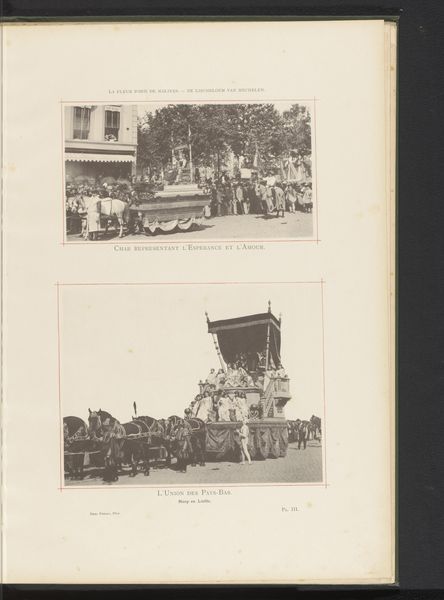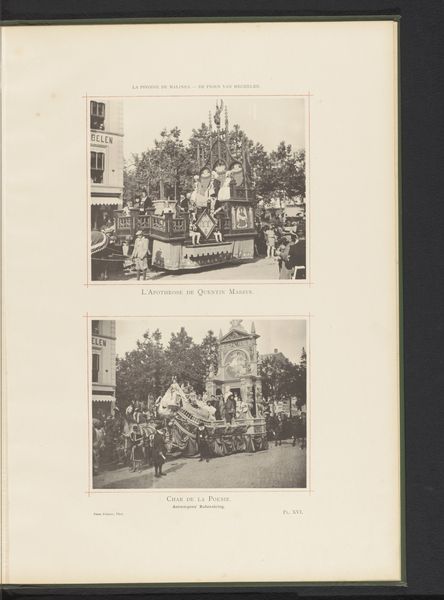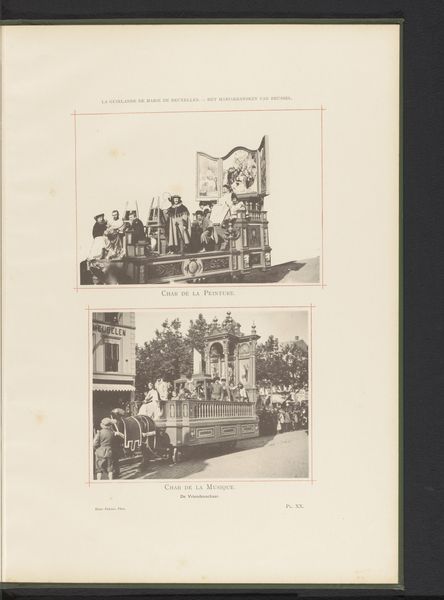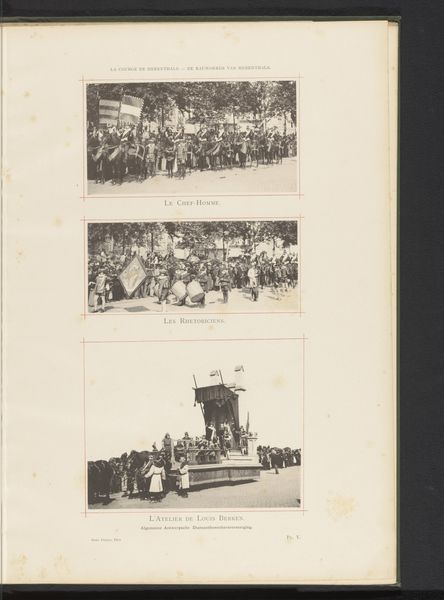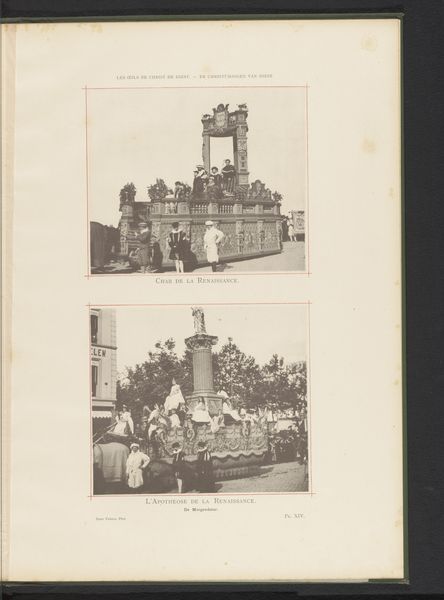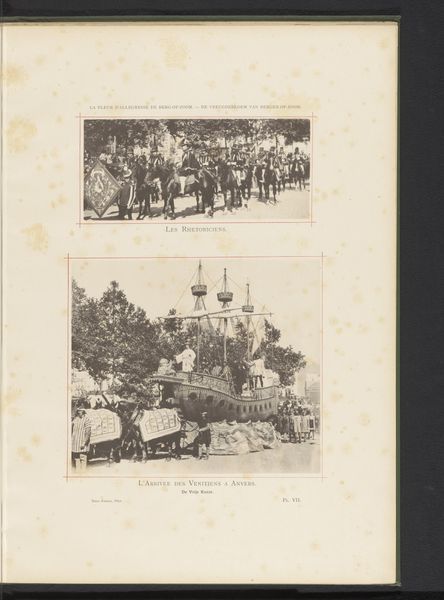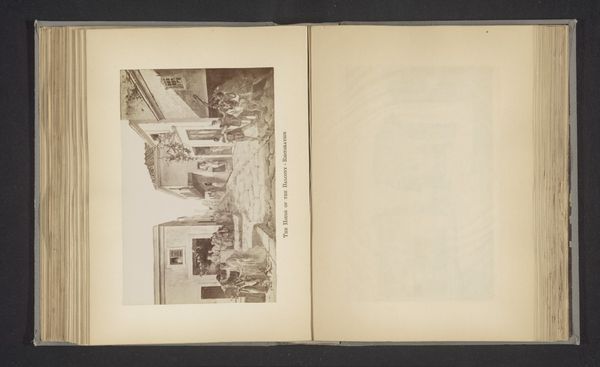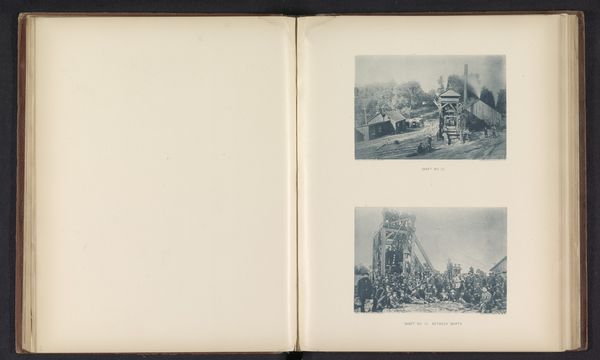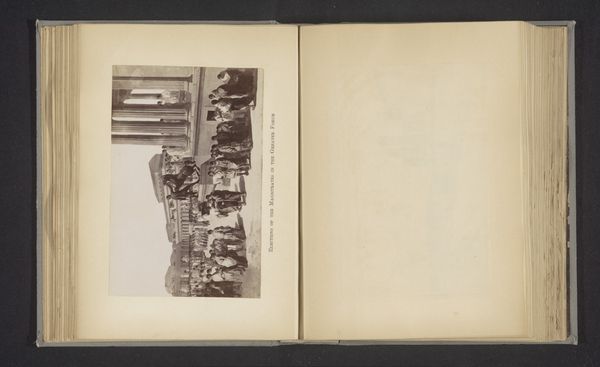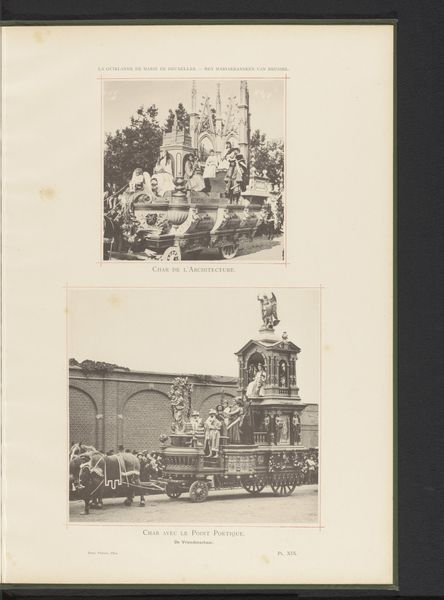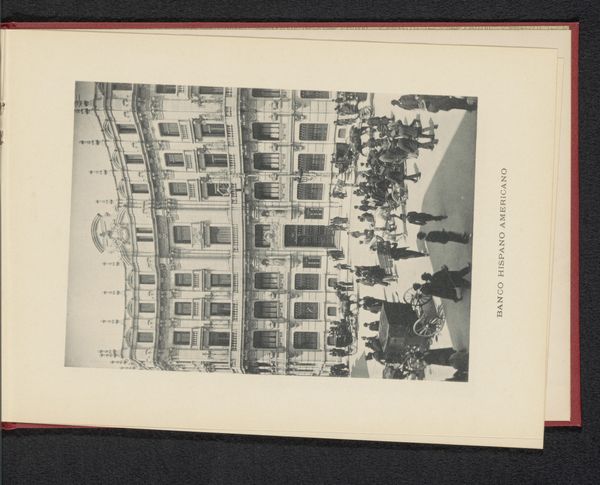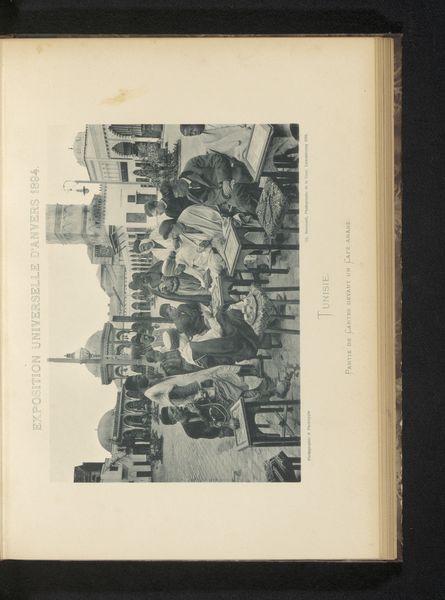
Twee gezichten op de optocht van Landjuweel ter ere van het vijftigjarig bestaan van de Academie d'Archéologie de Belgique in 1892 in Antwerpen 1892
0:00
0:00
print, photography
#
art-nouveau
# print
#
landscape
#
street-photography
#
photography
#
cityscape
Dimensions: height 495 mm, width 352 mm
Copyright: Rijks Museum: Open Domain
Curator: This fascinating photographic print by Frères Dero captures "Twee gezichten op de optocht van Landjuweel ter ere van het vijftigjarig bestaan van de Academie d'Archéologie de Belgique in 1892 in Antwerpen"—that is, two views of the Landjuweel procession celebrating the 50th anniversary of the Belgian Academy of Archaeology. It's dated 1892. What’s your initial reaction? Editor: There's a wonderful symmetry to the framing of these two street scenes—the architectural facades set at similar angles, and the lines of the trees in the middle distance provide this quiet verticality. The tonal range, of course, is limited, giving the image a restrained, almost nostalgic quality. Curator: Indeed. It is more than nostalgia; the event depicted was a symbol of Belgian national pride, linking archeology with cultural heritage. In this historical context, the print reinforces a sense of national identity formation that was exclusive, focused on whiteness and Europeanness in line with the biases of that era's coloniality. Editor: The semiotic weight is distributed quite elegantly across the composition. In the top image, note how the solid form of the statue contrasts with the movement in the lower image—particularly that undulating "sea" surrounding the ship. The contrast in shape directs our eye accordingly to narrative elements of permanence, the rootedness of tradition versus the openness, say, of future or promise. Curator: Absolutely. I interpret that symbolism with a critical eye to issues of representation and access in institutions of power. Who got to participate in this performance of national identity, and who was excluded based on class, race, gender and other social stratifications? It is imperative to consider Landjuweel, not as neutral expression, but embedded in 19th century cultural politics. Editor: While you emphasize the socio-political elements, I also appreciate how this photograph is meticulously structured. The distribution of dark and light—the way the canopies offer dappled shade which unifies, as it were, the scene—makes the visual storytelling engaging. Curator: Agreed, recognizing this, we can remember art's ability both to shape perceptions and potentially subvert the power dynamics it initially embodies, to forge new representations inclusive and equitable. Editor: Thank you, this has provided new perspective on how we may appreciate, and newly assess, how to analyze these streetscapes from a period defined both by cultural tradition, and a commitment to visual precision.
Comments
No comments
Be the first to comment and join the conversation on the ultimate creative platform.
